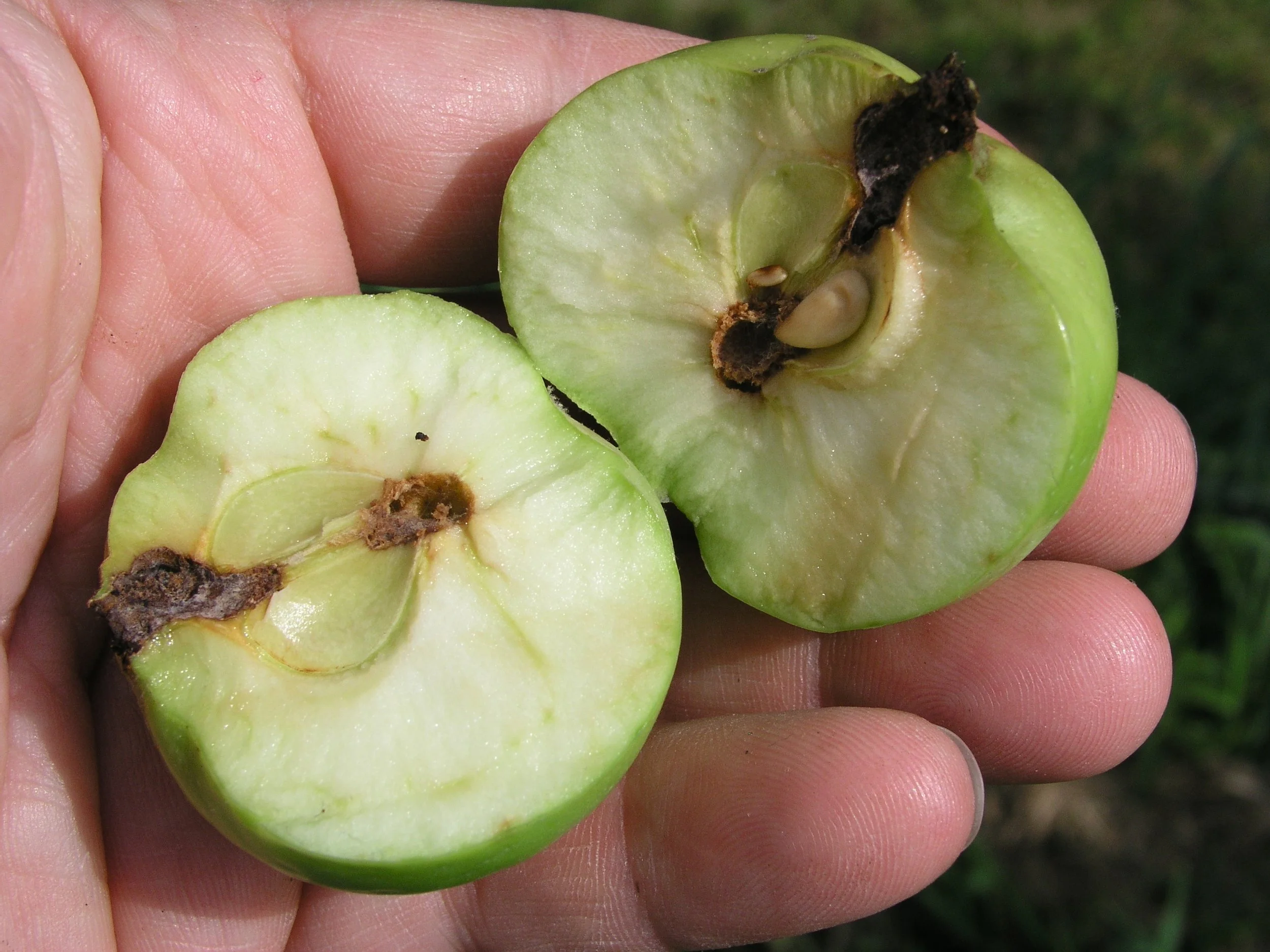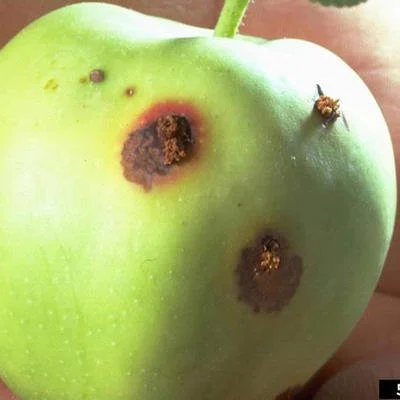The codling moth is the primary pest of apples and pears in the United States. If left unmanaged, larvae can cause substantial damage, often infesting 20 to 90% of the fruit.
For region-specific information, please contact your local Giving Grove partner. If you would like more information like this sent straight to your inbox, consider subscribing to The Serving, The Giving Grove’s quarterly newsletter.
Appearance:
Newly hatched larvae are only about 1/10 inch (2-3 mm) long with a black head and a creamy white body. Full grown larvae are ½ to ¾-inch (12 to 20 mm) long.
The mature codling moth is about ½-inch long with wings that have alternating bands of light and dark grey; a distinguishing feature of the codling moth are the bronze-colored scales on the tips of the wings that reflect the sunlight.
When at rest, the codling moth holds its wings over its body like a tent
Damage:
The codling moth prefers apple, but also attacks European and Asian pear.
Larvae bore deep into the fruit and feed on the seed, making fruit unmarketable. Though still edible, infected fruit is unappetizing.
Timing:
Adult moths emerge when temperatures reach about 60° F (15° C); late March-early April, laying eggs on blossoms and newly formed fruits.
Usually 1-2 generations per year. The second generation generally causes damage noted at harvest.
How to Avoid:
Early maturing (July-August) apple and pear varieties are less susceptible to damage by the nature of the codling moth’s life cycle.
When thinning fruits, target and remove infested fruit. Fruit with visible frass still contain the larvae and should be destroyed.
By keeping the orchard floor clear of fallen fruit, pupation and overwintering sites are eliminated.
Kaolin clay applications deter and disorient mature moths, and can be sprayed throughout the fruiting season.
Placing paper or plastic bags (or nylons) on fruit can eliminate CM infestation.
Wrap trunks near the end of blossom with corrugated cardboard, just under the lowest scaffold and another band near the ground. Codling moth cocoons will be spun within the tube-like creases of the cardboard. Remove cardboard wraps 3-5 weeks later. Repeat in late July to capture 2nd generation CM.
How to treat:
Targeting the first generation is important.
Sprays with Neem, Bt, or Spinosad can be used to control CM. Spraying should commence shortly after petal fall, applied around sunset when adult moths are most active, and repeated twice approximately 5 – 7 days later.
Use bagging method to protect individual fruit.
Why it matters:
If left unmanaged, larvae can cause substantial damage, often infesting 20 to 90% of the fruit.
Sources: MyIPM, University of California IPM, Cornell University Extension, Arbico Organics, Patrick L. Byers, Horticulture Specialist, and Michael Phillips, “The Holistic Orchard”. Additional photo credits: UMN Extension and USU Extension.




